You can freeze pizza dough at home with excellent results. It’s a great way to reduce waste and you get to enjoy incredible homemade pizza with less effort!

Let’s say you’ve made pizza using my Authentic Neapolitan Recipe or my Poolish Pizza Recipe, but you have leftover dough. Well, instead of throwing it out, you can freeze it!
Freezing pizza dough at home is really easy to do but there are a couple of tricks that I’ll share. In fact, frozen dough can turn out so good that some people make dough just to freeze it!
Keep reading this article to find out everything you need to know about freezing your own dough. Alternatively, click here to skip straight to the instructions.
In general, frozen pizza dough should comfortably last 3 months in the freezer. Beyond this, the dough may start losing it’s strength, stretchiness, and flavour.
In reality, the dough would probably be safe to eat after much longer than this. This is especially true since the pizza is going to be cooked at high temperatures. However, I don’t recommend trying it!
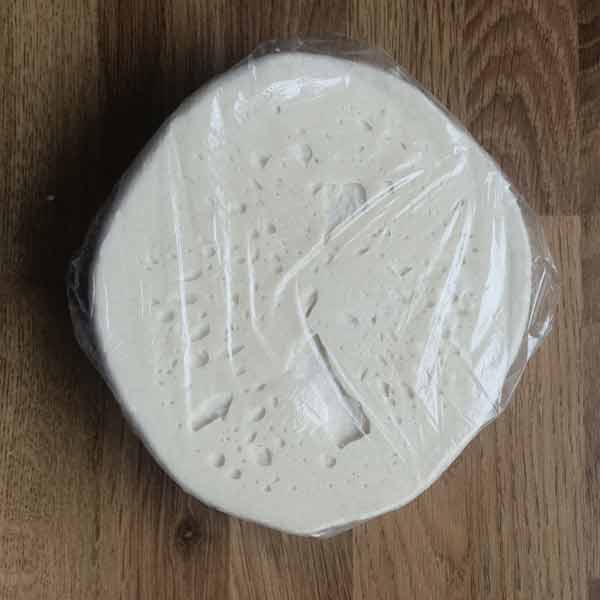
For me, the point of making pizza at home is that we get to eat the best pizza possible. For this reason, I think it’s best to eat use the dough within 3 months.
Frozen pizza dough may not make pizza that’s quite as good as fresh but it saves waste and it makes for an easy meal. Personally, I’m all for saving food waste whilst enjoying delicious food so I think frozen pizza is a win-win!
One tip is to put a sticker on your pizza dough with the date it went into the freezer. This allows you to keep track of how long it has been in the freezer.
I recommend freezing pizza dough before cooking. This should produce pizzas that more closely resemble those made with fresh dough.
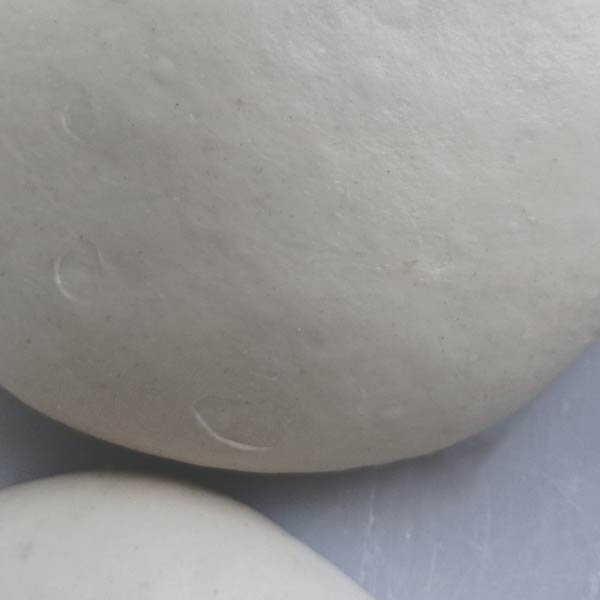
If you were to freeze pizza dough once it is cooked, you would have to cook it again once defrosted. This risks overcooking and drying the dough out.
The one benefit to this method, however, is that it avoids the need to shape the pizza before cooking. If that’s a dealbreaker, then by all means experiment. And if you do, let me know your findings in the comments at the bottom of this page!
However, for me, I like to replicate fresh dough as much as possible. That’s why I like to freeze my pizza dough before it’s been cooked. In fact, you might not even be able to tell the difference, that’s how good it can be!
Thawing your frozen pizza dough is arguably the key to getting the best out of it. This is especially true if you freeze your dough while it’s still balled, which is what I recommend.
Once the dough has fully defrosted, you can then shape and cook your pizzas just as normal. If it isn’t fully thawed, it probably won’t shape and cook properly.
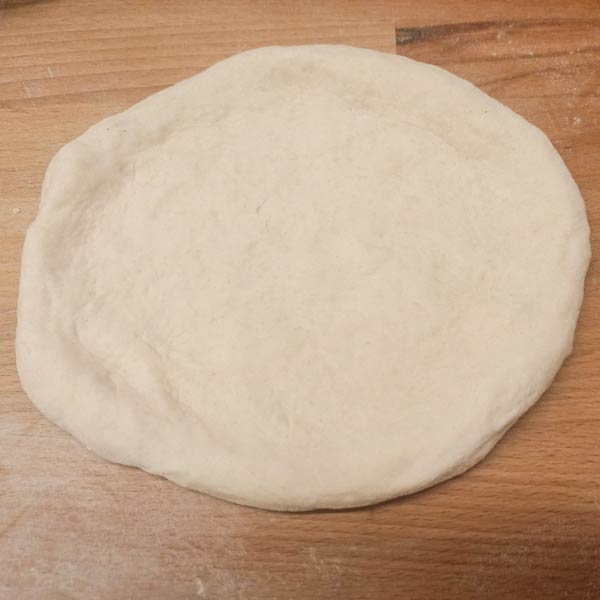
The alternative to this method, would be to shape your dough balls into pizzas and then freeze them. However, this would present a number of problems.
The biggest issue would be that the stretched dough would lose likely it’s strength as it’s defrosting. This would probably lead to difficulties loading the defrosted pizza, and possibly tears (both kinds)!
Also, the pizza would continue to prove slightly, firstly as it’s freezing, and secondly, as it’s defrosting. This would likely lead to a thick pizza as opposed to the thin base that we’re (usually) aiming for.
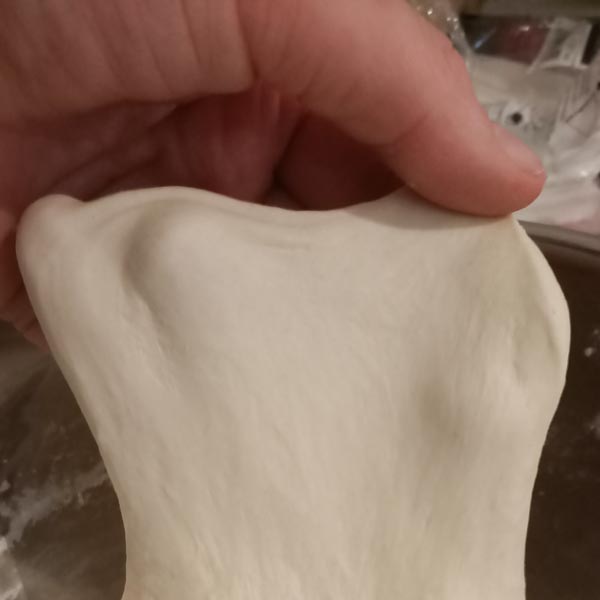
Finally, storing your shaped pizza in the freezer (whithout causing damage) would be tricky. Personally, I wouldn’t want to risk it, and if I did, I wouldn’t have the space for it anyway.
For these reasons, I think it makes much more sense to freeze your pizza dough before cooking, and before shaping. Using this method, your frozen dough pizzas should turn out much more like fresh dough pizzas. Plus, it makes the storage much easier and safer.
For me, freezing your dough balls (before shaping) and ensuring they are thoroughly thawed is the way to go.
Typically, it’s recommended to freeze pizza dough after it has risen. Or more specifically, just before it has fully risen. This could be one of the hidden secrets to making amazing pizza from frozen dough.
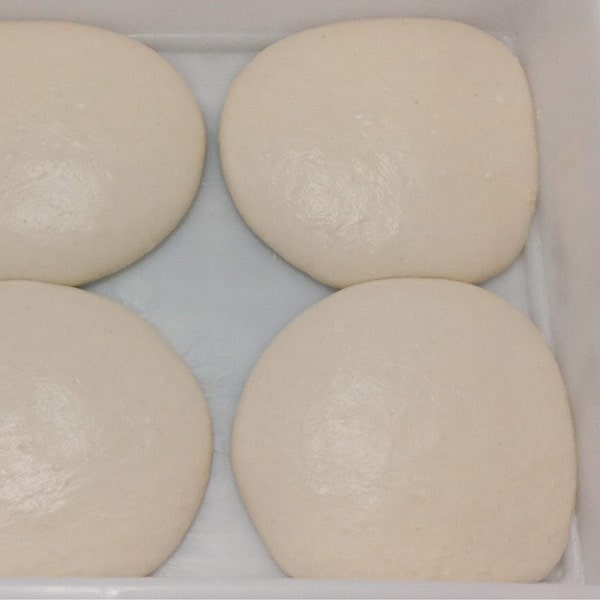
The reason for freezing dough after, is that the freezing process kills some of the yeast. This means that once defrosted, your dough likely won’t prove as well as it did before freezing.
However, the dough should still prove a bit as it’s defrosting. Though how much will probably depend on how long the dough has been frozen for.
So in general, I recommend freezing your dough balls just before they’re ready to use (fully proved). Getting the timing right is not an exact science and it may take a bit of trial and error.
If your dough is a bit overproved, for example, if you’ve already made pizza. You could reball the dough and wait say 2 or 3 hours before freezing. Alternatively, you could refrigerate the reballed dough overnight and put it in the freezer the following day.
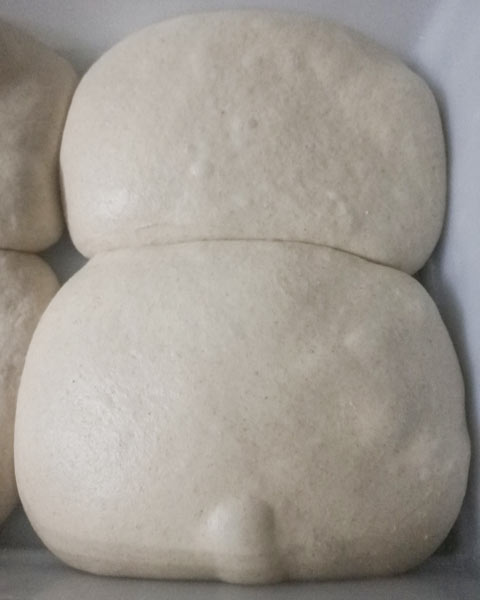
This should ensure that the dough is suitably proved (not overproved) before freezing.
This method allows for the dough to prove a little as it’s defrosting. Hopefully, once your dough is fully thawed, it should be just about fully proved.
Having said that, don’t worry if your dough overproves, you can always use the technique of knocking back, which I explain in this article. Just bear in mind that frozen dough will likely prove quite a bit slower than fresh dough. It might take twice as long to prove, as a rough estimate.
You can freeze pizza dough balls together in a plastic box or similar. Once they have frozen you can then seperate them into individual resealable bags. This is probably the most convenient method I’ve found.
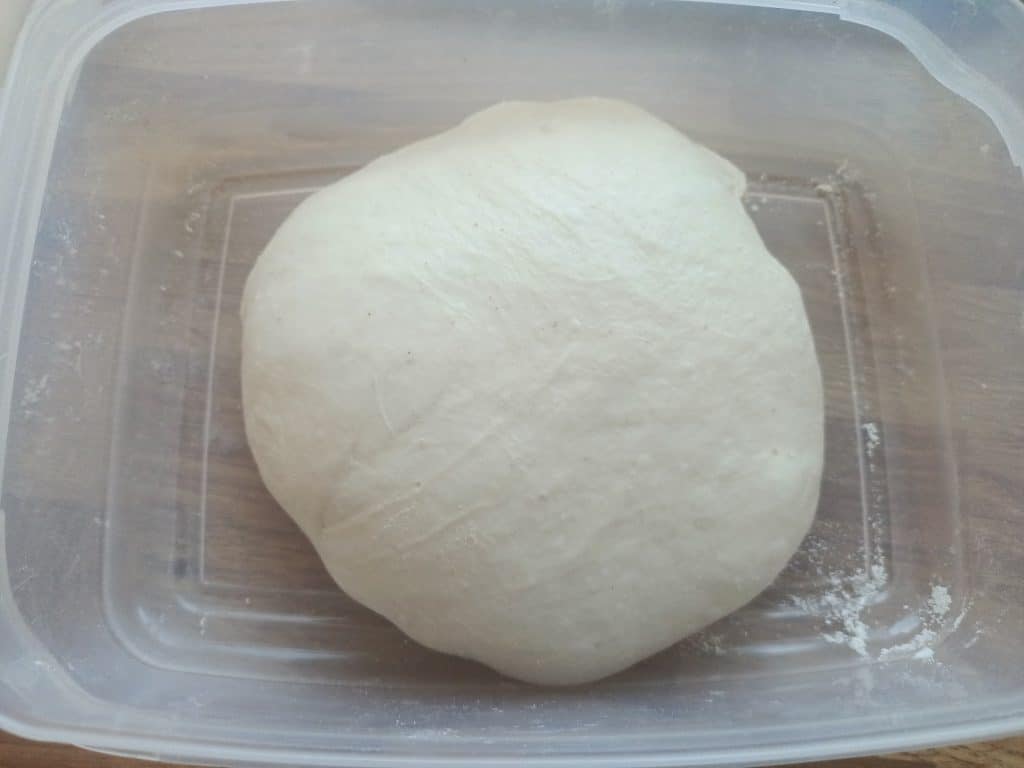
Instead of a plastic box (tupperware type), you could place your dough balls on a baking tray and cover them with plastic wrap. However, you need to make sure the plastic wrap is tightly sealed (air tight) but not pressing tightly on the dough balls. We don’t want the plastic and the dough to become one! (But we also don’t want the dough to dry out.)
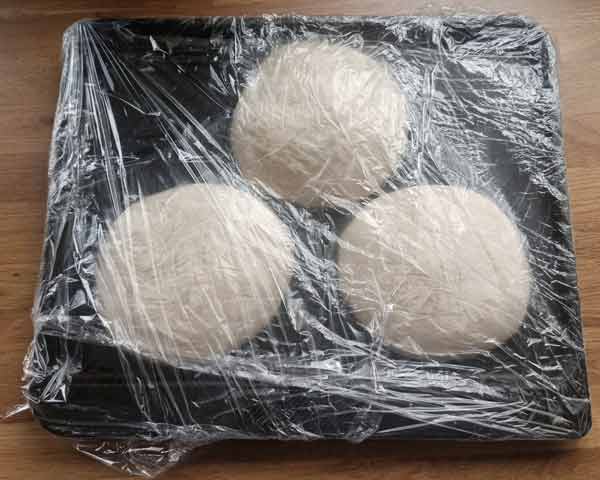
If the dough balls are touching slightly it’s OK, once they’re frozen they should be easy to seperate. Then, once sperated they can be placed individually into resealable bags.
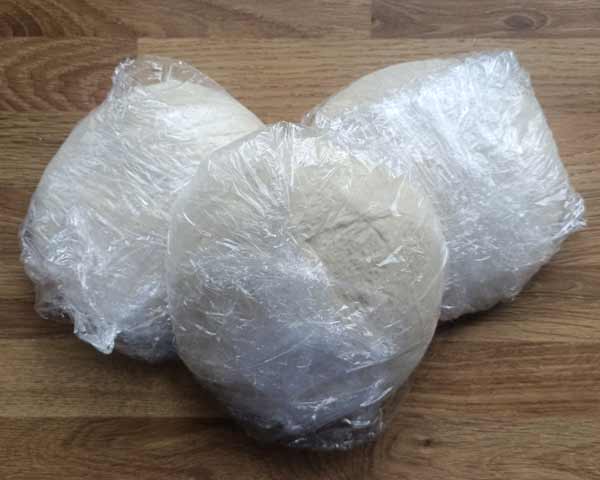
This technique allows us to defrost as many dough balls as we want at any one time. We could just remove 1 or we could remove 3 or 4. And, of course, the bags can be reused the next time there’s leftover dough.
The step by step instructions for freezing your dough are below. They should help you to get the best out of your frozen dough. The keys are freezing at the right time and defrosting properly.
Also, the technique I recommend for freezing allows for convenient storage. It’s really easy and works so well! You can freeze leftover dough or make extra dough especially for freezing.
One thing I don’t discuss in this article, is how to make the dough itself. This is one of the most important steps in pizza making and I have plenty of articles on it. Check out the recommendations below.
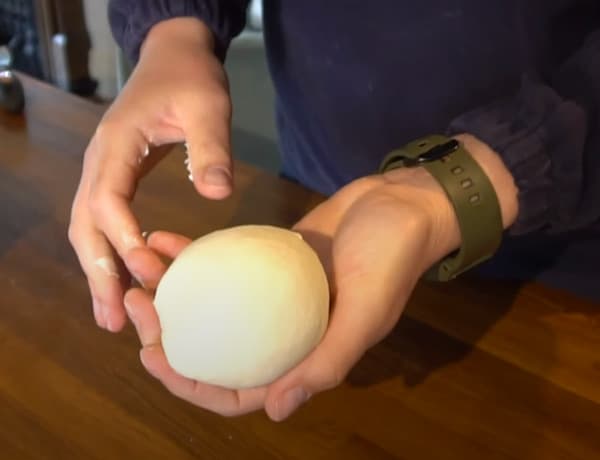
For the dough, I’d recommend my Authentic Neapolitan Recipe to start with. Once you get confident at that, you could then give my Poolish Recipe a go, it’s a bit more advanced.
For the experts out there, check out my Sourdough Recipe here. I’ve also got a recipe for New York Style Pizza here, if that floats your boat!
With that said, let’s get into the Freezing Pizza Dough Step by Step.

How To Make The Best Frozen Pizza – Neapolitan Style
This method makes freezing and storing pizza dough super easy. You can save your leftovers or make dough especially for freezing. Having some dough in the freezer is perfect for those last minute pizza night cravings!
Not all the following utensils are required but these are what I use and they tend to make the process much easier.
Any large bowl could be used for mixing the dough but I like using the metal ones since they’re lightweight, stackable, and easy to clean.
Click here to check out metal mixing bowls like the ones I have on Amazon.
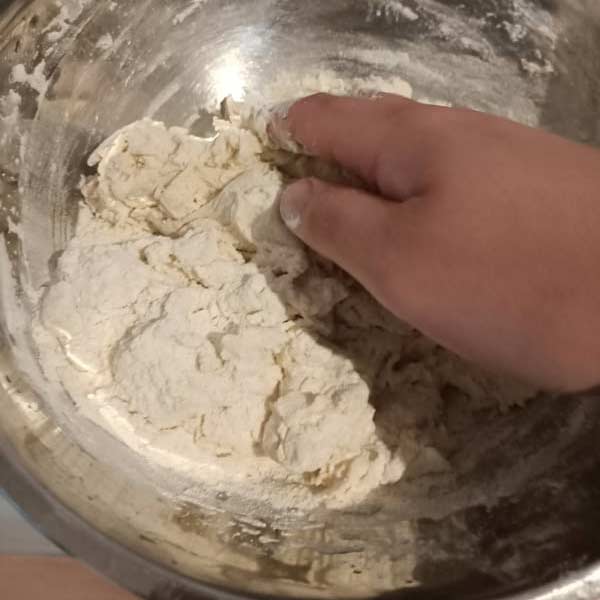
These are affordable, easy to use, and precise (accurate to 1g). I don't recommend using cups as measurements as they are inprecise.
Click here to take a look at the type of digital scales I use on Amazon.
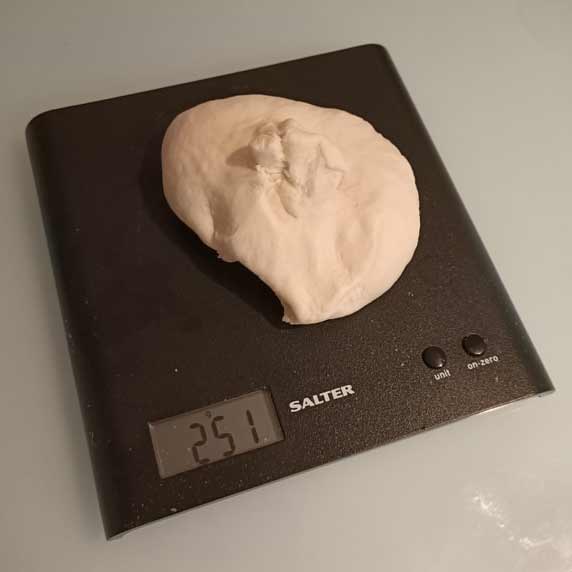
These kitchen scales are accurate to 0.01g and are perfect for measuring the tiny amounts of yeast needed for long proves.
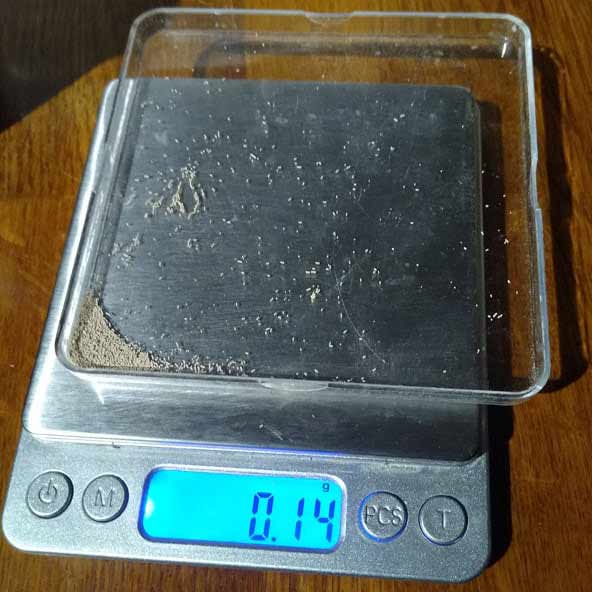
Pizza proofing boxes are an excellent investment. They are airtight and they make taking the dough out for shaping very easy.
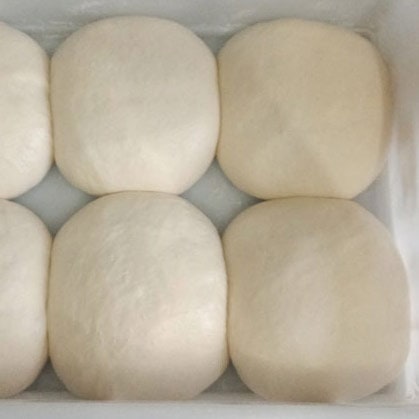
An infrared thermometer allows you to instantly check the temperature of the stone, ensuring it is within the ideal range.
Click here to check out a pizza peel similar to the one I use on Amazon.
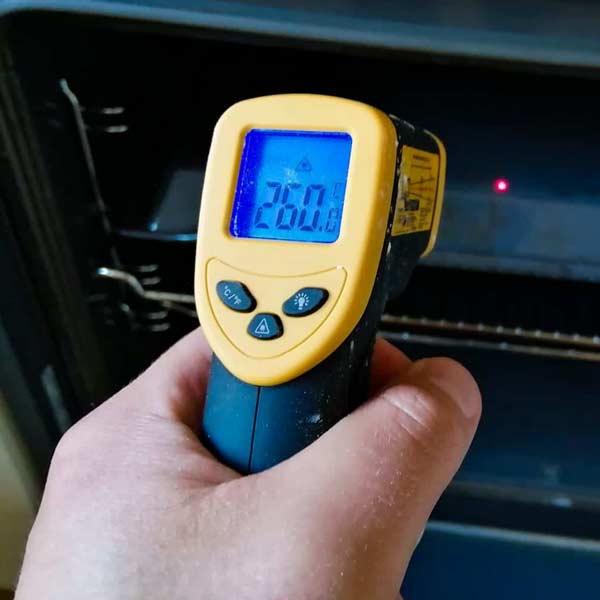
A 12 inch peel is ideal for Neapolitan pizza and makes loading and removing your pizza from the oven really easy.
Click here to check out a pizza peel similar to the one I use on Amazon.
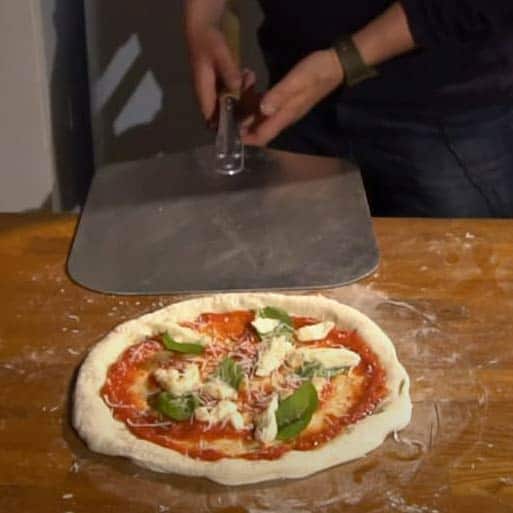
A turning peel is designed for rotating the pizza during cooking. If you're using a pizza oven it should lead to a superior and more even cook.
Click here to check out a pizza peel similar to the one I use on Amazon.
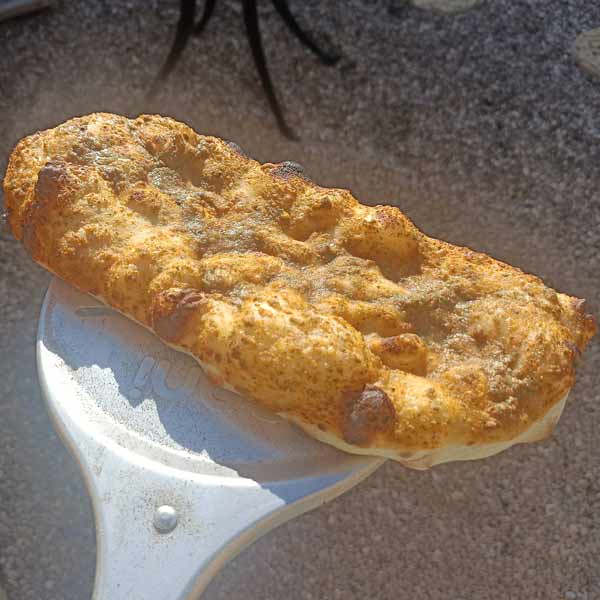
A pizza oven is guarenteed to take your pizzas to the next level. I have an Ooni Karu 16 which reaches 500C/930F and cooks pizza in as little as 60 seconds! A regular oven simply cannot match the cook of a pizza oven. I love my Ooni!
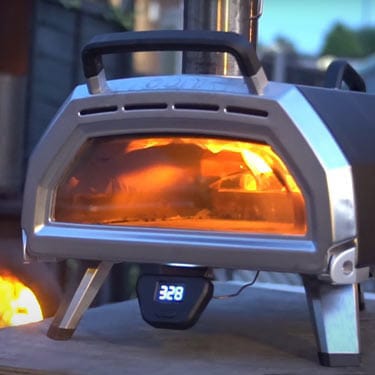
Note: Ensure your dough is airtight at every stage of the process. The last thing we want is for our dough to dry out, leading to inconsistent shaping and cooking.
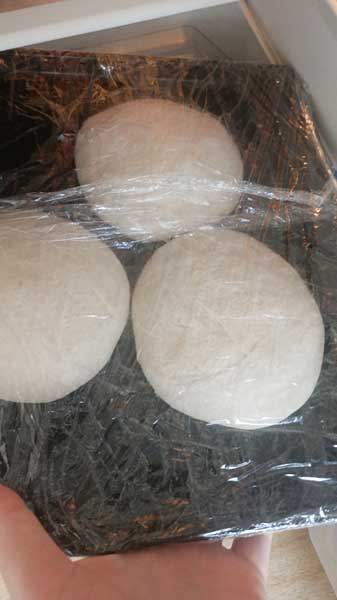
A baking tray and plastic wrap works just fine
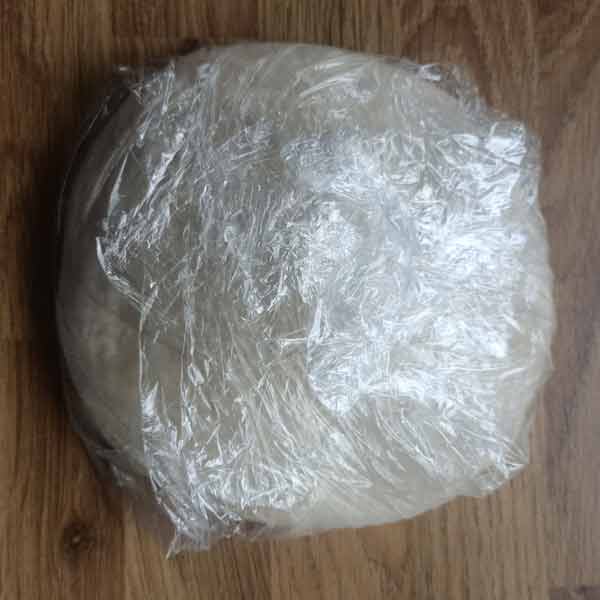
The dough won’t stick since it’s frozen
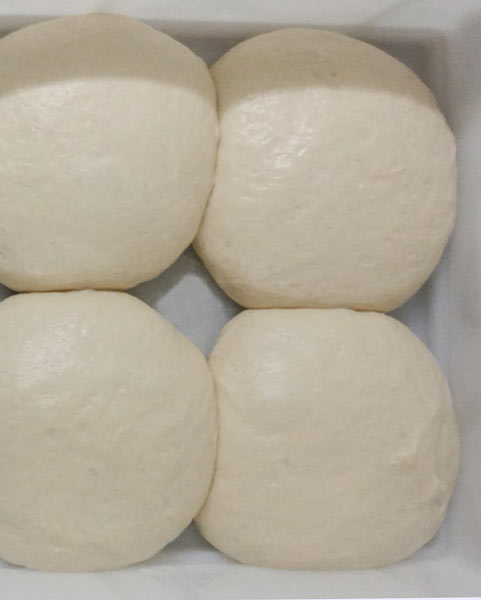
Room temperature dough should shape and cook better

Frozen pizza dough can make incredible pizza. Just like any part of the pizza making process, it takes great attention to detail for the best results.
Personally, I tend to just freeze leftovers and thaw them when needed. However, you could purposefully make extra dough just for freezing. This can be especially helpful if you have a busy lifestyle. It makes pizza that bit quicker and easier.
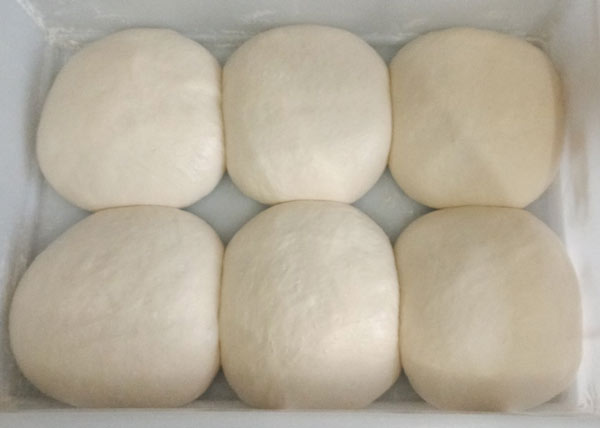
Making extra dough doesn’t take much longer and it allows for frozen leftovers!
One thing I should mention is that this article wasn’t intended to provide precise timings. As with any dough, getting this right takes practice. Over time you should get to know your own method and then hopefully the timings should become second nature.
Hopefully this article explains everything you wanted to know about freezing pizza dough. If you do have any questions leave them below and I’ll try to reply as soon as I can.
Good luck!

I’m Tom Rothwell and I’m super passionate about all kinds of homemade pizza! In the last few years I've been on a quest to find the perfect pizza. Now I'm sharing what I've found out with the world!

If you're interested in hiring me for your event in the UK, feel free to check out my website with the link below.
Pizza Catering
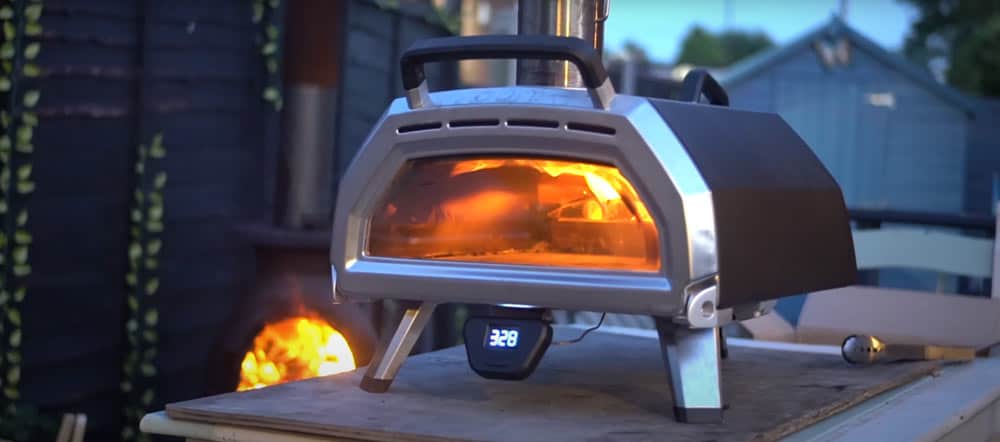
I often get asked what type of oven I use for my pizzas. Well, I use a pizza oven made by a company called Ooni.
The range of pizza ovens that Ooni offers is just brilliant. They cover all bases, and all price points. There's affordable and portable models such as the Fyra 12 Pizza Oven and then there's state-of-the-art models such as the Karu 16 Pizza Oven pictured below.
In all honesty, I would say that the oven makes a huge difference. If you're looking to make authentic Italian pizza, a pizza oven is a must.
By clicking the link below and purchasing from Ooni, you would be supporting this website. I've been using their ovens for a long time now and I wouldn't recommend them if I didn't believe in their products.
Time to make some amazing pizza!

I’m Tom Rothwell and I’m super passionate about all kinds of homemade pizza! In the last few years I've been on a quest to find the perfect pizza. Now I'm sharing what I've found out with the world!

If you're interested in hiring me for your event in the UK, feel free to check out my website with the link below.
Pizza Catering